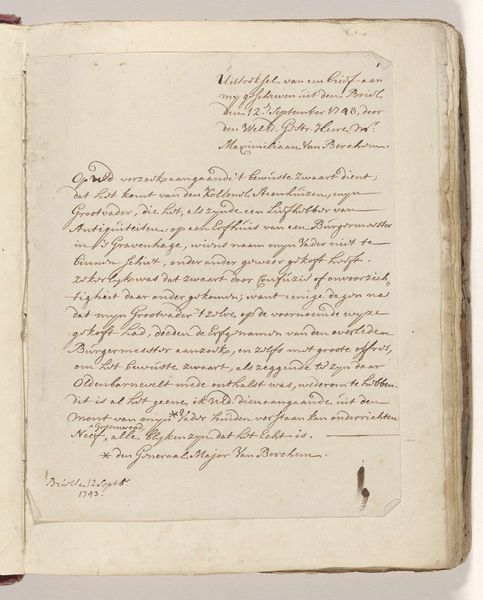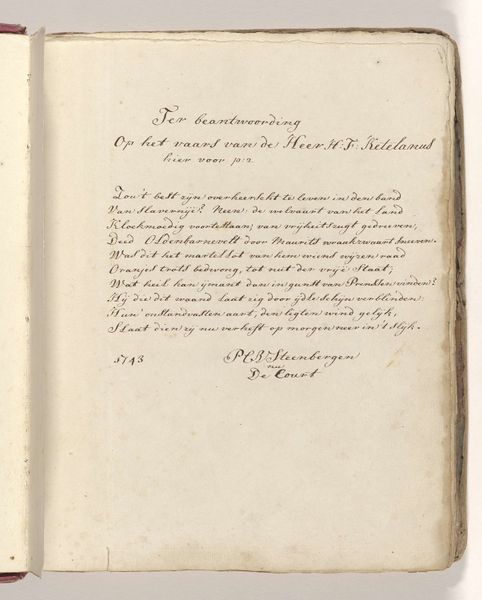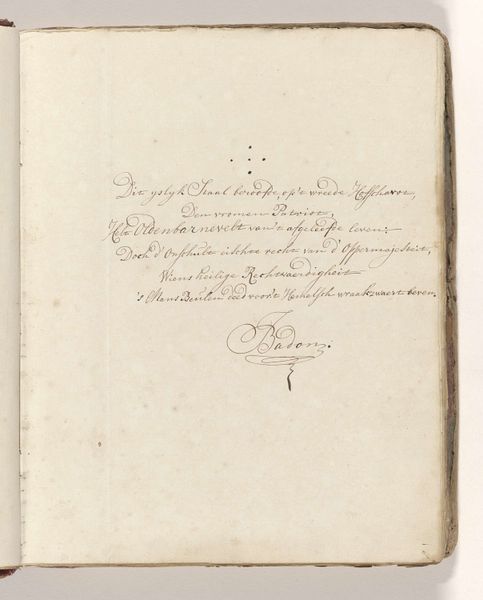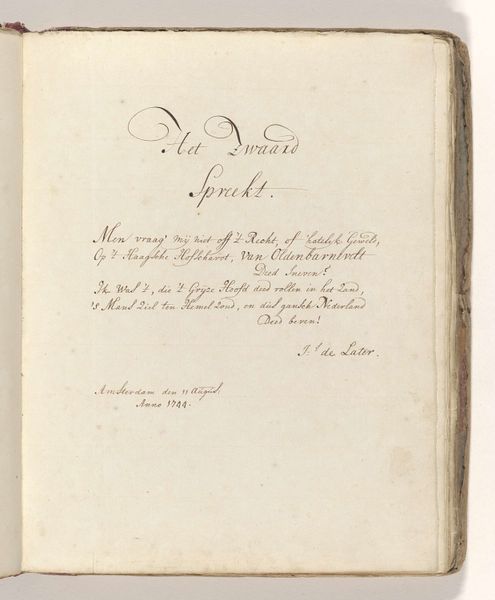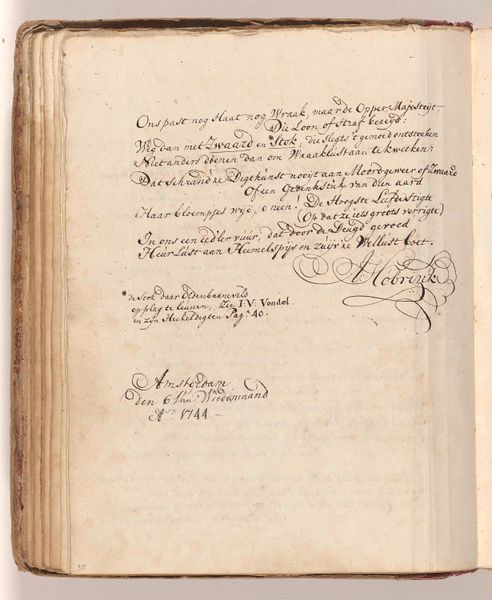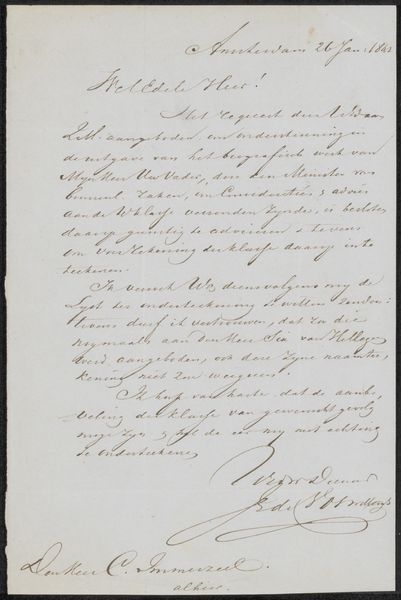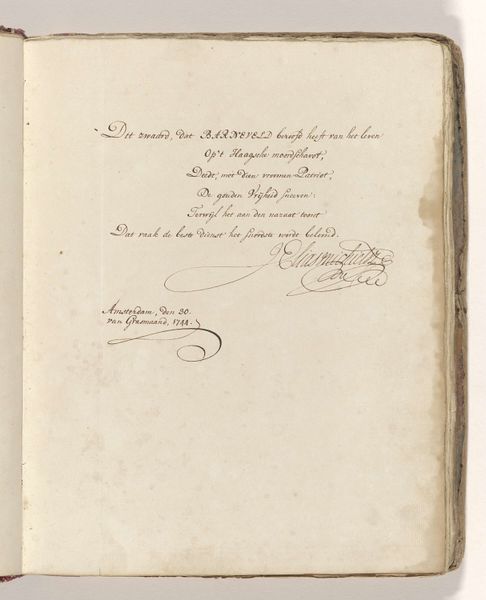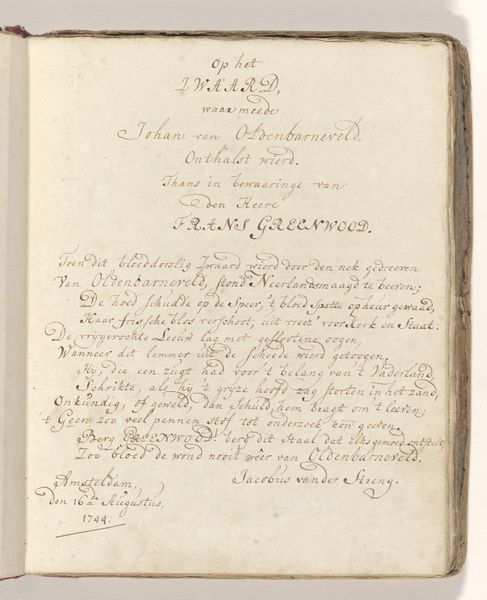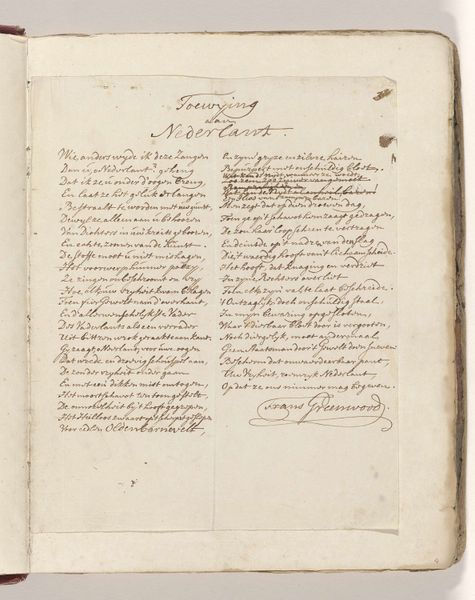
Gedicht op het zwaard waarmee Johan van Oldenbarnevelt in 1619 zou zijn onthoofd Possibly 1744 - 1745
0:00
0:00
drawing, textile, paper, ink
#
portrait
#
drawing
#
medieval
#
narrative-art
#
textile
#
paper
#
ink
#
intimism
#
history-painting
#
calligraphy
Dimensions: height 275 mm, width 220 mm
Copyright: Rijks Museum: Open Domain
Curator: Look at this intriguing page, purportedly created by Jacobus Stamhorst. It is said to contain a poem etched onto the sword believed to have beheaded Johan van Oldenbarnevelt in 1619. The estimated date of creation is around 1744 or 1745. Editor: It's austere. The penmanship lends it an air of aged severity; each character stands rigidly, narrating some grave pronouncement. Is it truly written with blood and on the very weapon, as it claims? Or is it an epitaph of sorts? Curator: While it’s written in ink on paper, the poem itself refers to a sword. The starkness you observe perhaps amplifies the gravity of the events described. The text weaves an emotional narrative and also possesses qualities reminiscent of calligraphic portraiture of the era. Editor: You're right, the visual weight seems meticulously placed, much like constructing an imposing monument with words. There's an intimacy as well, penned carefully on a single page, it whispers a personal encounter with a major historical wound. Curator: Indeed. "Gedicht op het zwaard waarmee Johan van Oldenbarnevelt in 1619 zou zijn onthoofd," as it’s titled, really functions on two planes – one as a piece of memorial art, the other, potentially, as an object of near-mythical status. It encapsulates Dutch political history and mourning. Editor: It succeeds, I believe, in amplifying the weight of a somber relic. Stamhorst seems to use the inherent properties of calligraphy to express mourning through visual weight and to amplify the narrative potency—very striking. Curator: It certainly allows one to ruminate on the nature of memory and meaning and how these can be embodied through objects, text, and time. Editor: Indeed. And while modest, in both size and tone, the artwork really makes us think deeply.
Comments
No comments
Be the first to comment and join the conversation on the ultimate creative platform.

